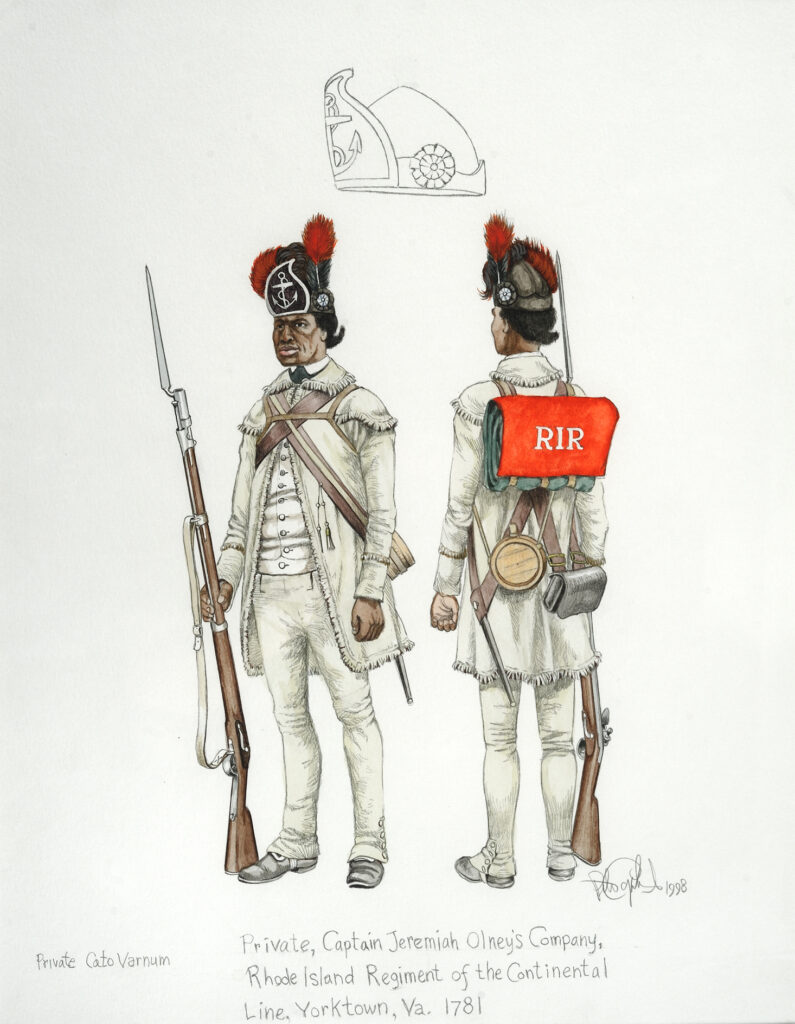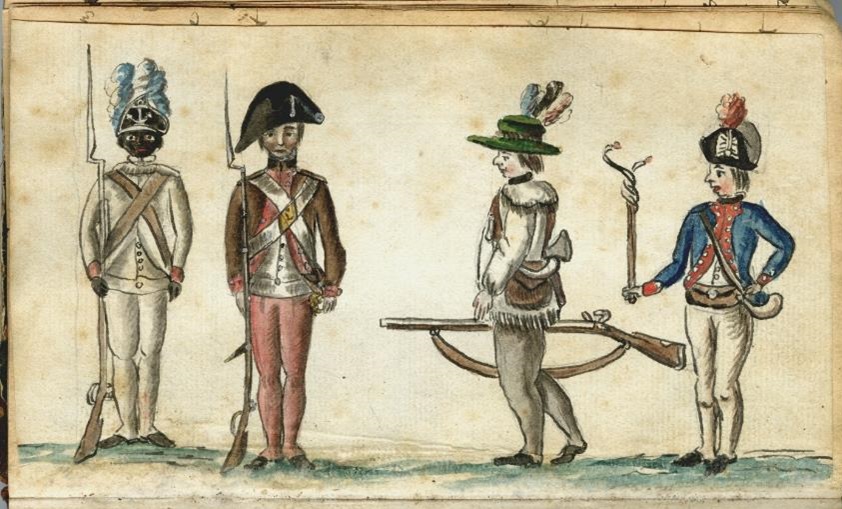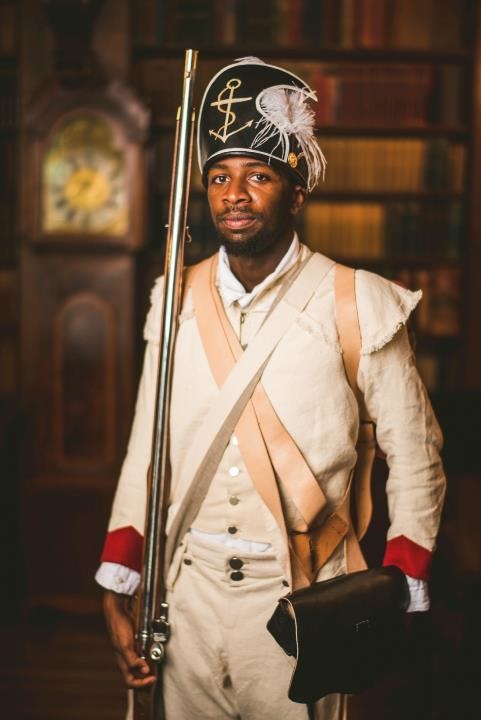African American Soldiers
Enslaved and free African Americans fought for both the Patriot and British forces during the Revolutionary War. In 1775, Lord Dunmore, the royal governor of Virginia, issued a proclamation that promised freedom to enslaved persons who left their Patriot owners to join British forces. African Americans continued to seek freedom under the British flag throughout the war, especially in the southern theater, with many serving as guides for British troops unfamiliar with the region.
African American troops also fought for the Patriot cause, often serving for years in the Continental Army. When George Washington first arrived in Cambridge in 1775 as the newly appointed commander in chief, he resisted the presence of African American soldiers in the army. Over time, Washington, in constant need of more troops, witnessed firsthand the valiant service of African American troops, including those serving in the First Rhode Island Regiment, one of the best units in the Continental Army.
The First Rhode Island Regiment
Needing additional recruits for the Continental Army, in February 1778, the Rhode Island legislature declared that “every able-bodied negro, mulatto, or Indian man slave in this state may enlist . . .” The resolution promised “that every slave so enlisting shall, upon his passing muster before Col. Christopher Greene, be immediately discharged from the service of his master or mistress, and be absolutely FREE, as though he had never been incumbered with any kind of servitude or slavery.” The legislature provided compensation to slave owners. Enslaved men quickly responded to the new legislation and the ranks of the Rhode Islanders swelled. The cost of government compensation was high and slave owners bemoaned their loss of labor. Because of these issues, the initiative to enlist the enslaved in the state lasted only four months.
Despite lasting only several months, two regiments were formed from this wave of enlistments. Most of the formerly enslaved were organized into the First Rhode Island Regiment, which came to be known as the “Black Regiment,” although the unit was commanded by white officers. During the Battle of Rhode Island in August 1778, the regiment repelled three Hessian attacks. In 1781, Washington ordered the regiment south to Yorktown with the main army. Men of the First Rhode Island were part of the assault force that captured British redoubts 9 and 10, which led to the defeat of Cornwallis’s forces at Yorktown.
Reproduction Clothing and Equipment
The Continental Army Trunk includes a reproduction uniform of the First Rhode Island Regiment. The soldier wears the signature cap of the regiment with an anchor. He wears a white work shirt with a black necktie and off-white vest called a waistcoat. He wears an off-white jacket with fringed cape and collar, off-white overalls, and leather cross belt to hold a bayonet. He carries a cartridge box, canteen, and haversack at his sides and a knapsack containing a blanket on his back.
Additional Lesson Plans and Links
The Legacy of Crispus Attucks – The American Revolution Institute
Vox Africanorum – The American Revolution Institute
The Elusive Peter Hunter – The American Revolution Institute
The Heroic Jeffrey Brace – The American Revolution Institute

Watercolor sketch representing Private Cato Varnum of Captain Stephen Olney’s Light Infantry Company, Rhode Island Regiment, 1781
Peter F. Copeland, based on research by Marko Zlatich.
The Robert Charles Lawrence Fergusson Collection
This figure represents Private Cato Varnum, and African American whose name appears on the rolls of Captain Stephen Olney’s light infantry company. Although nothing is known of his origins, records show that Cato Varnum enlisted in Captain Ebenezer Flagg’s company of the First Rhode Island Regiment in March 1778; two years later he is listed with the infantry with whom he remained until the end of the war. Private Varnum’s uniform and equipment are based on Verger’s watercolor and other documentation. Distinctive to the Rhode Island Regiment is the black leather cap bearing the Rhode Island anchor emblem; Captain Olney’s soldiers added red-tipped black feathers that were a gift of their division commander, General Lafayette. In addition, Varnum is shown wearing the standard linen frock, waistcoat and overalls of the regiment and carrying a 1767 French Charleville musket and bayonet.
Soldiers in Uniform
Jean Baptiste Antoine de Verger
1781Anne S.K. Brown Military Collection, Brown University
This watercolor was madee by a French officer who served with the combined American and French forces during the Yorktown campaign. Among the four soldiers depicted is an African American member of the First Rhode Island Regiment.

